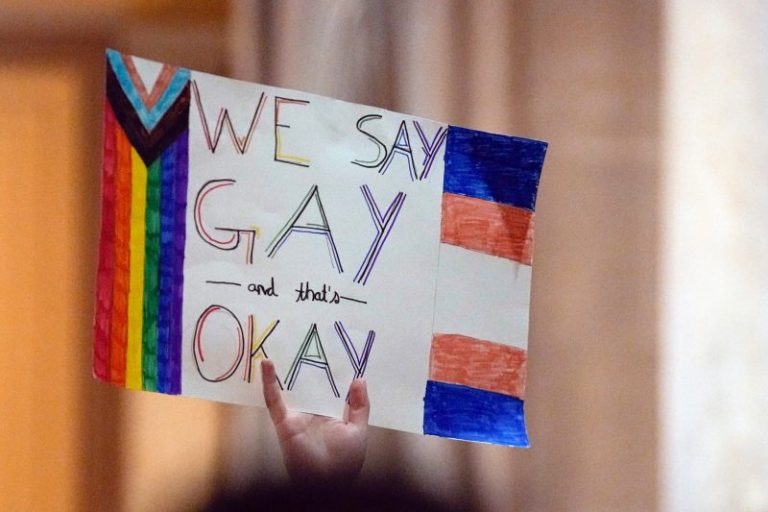As it does regularly, Gallup asked Americans last year if they identified as straight, lesbian, gay, bisexual or transgender. About 7 percent of Americans said they identified as one of the latter four categories, essentially the same percentage as identified that way in 2021.
There was an interesting divide, though. When Gallup broke out responses by age, it found that younger Americans were much more likely to identify as LGBT (the Gallup poll excluded “queer,” so no “Q”) than older ones. Only about 2 percent of those in the Silent Generation (born during or before World War II) identified as LGBT. By contrast, about 20 percent of Gen Z (should be known as Lockdowners) chose one of the LGBT options.
This phenomenon is not new. The divide between older and younger Americans on self-identification has been a subject of debate for some time and is often cited in rhetoric targeting the perceived liberalizing effect of education and culture. As Florida considered legislation passed last year that limited discussion of same-sex relationships in schools, the dangerous idea that kids were being actively encouraged to be gay became prevalent in right-wing rhetoric.
There is a simpler explanation, one that grants adults the agency of their choices. Decades of hostility to same-sex relationships loosened in recent years, and younger Americans grew up in a country that was less hostile to gay relationships than it used to be. And, therefore, they’re more comfortable expressing their sexual identities openly.
We can see the trend in acceptance of same-sex relationships in the General Social Survey (GSS), a national poll fielded every two years. (The 2020 survey was postponed to 2021 because of the pandemic.) Since the early 1970s, respondents have been asked how they view sexual relations between members of the same sex. After rising slightly in the 1980s — no doubt influenced in part by the AIDS epidemic — there has been a steady decline in the percentage of Americans who say same-sex relationships are always wrong. Importantly, that decline has been seen in every generational group, even those who haven’t attended elementary school in half a century.
We only have good data for members of Gen Z and younger groups in the past two GSS polls. Since only a relatively small group of members of that generation were surveyed in 2018, there’s a greater margin of error for that year. That probably helps explain the seeming jump in the 2021 figure.
Importantly, there is a correlation between the extent to which generations view same-sex relationships as always wrong and the extent to which members identify as LGBT in Gallup’s data. Gen Z is least likely to view those relationships as wrong (the dot farthest to the left on the graph below) and most likely to identify that way (highest). (The graph also indicates where the Gen Z dot would be using the 2018 GSS data. It’s visible as a light red dot behind the “G” in the label for the vertical axis.)
In the abstract, this could be seen as evidence in favor of the idea that young people were being trained to view LGBTQ relationships as acceptable. But this does not account for the downward shift in opposition to same-sex relationships among members of other generations.
It also ignores other lessons from American history. In 2015, The Washington Post presented this graph, showing how identification of children as left-handed rose during the 20th century and then plateaued at about 1 in 8 kids.
Kids weren’t being groomed to be lefties. Quite the opposite: When my mother was young, she was told to learn to write with her right hand. Over time, that idea fell out of favor and lefties could simply be lefties. The percentage of the population that is left-handed stabilized.
Perhaps what’s happening with LGBTQ identification is analogous. Perhaps the change isn’t that kids are being encouraged to be gay when they aren’t; perhaps it’s that they feel free to identify that way if they are — a freedom older Americans didn’t enjoy. A freedom some still see an unacceptable for themselves or in their peer groups.
Maybe what Gallup is doing, then, is simply more accurately measuring reality.

